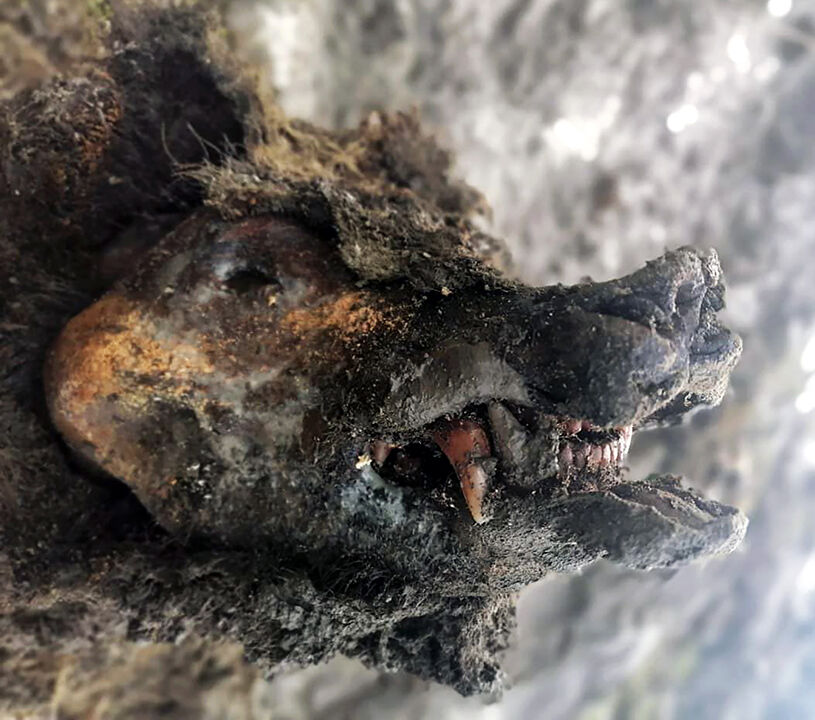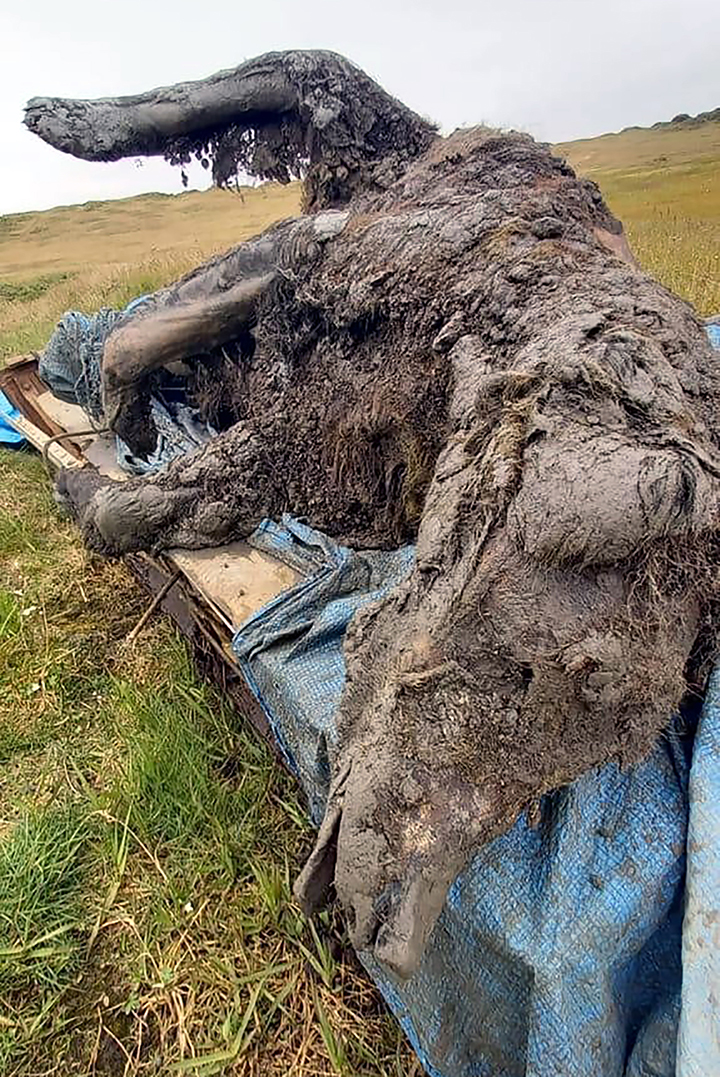
NEFU
Beautifully preserved cave bears emerge from Siberian permafrost
Two finds recently unearthed the frozen remains of an adult cave bear and a cub.
by Kiona N. SmithReindeer herders on the Siberian island of Bolshoy Lyakhovsky recently stumbled across the frozen carcass of a cave bear. Nearby, on the Siberian mainland of Yakutia, a tiny, beautifully preserved cave bear cub recently emerged from another patch of melting permafrost. It’s the first time in 15,000 years that humans have come face to face with a cave bear in the flesh—until now, we’ve known the species only from bones, tracks, and abandoned nests.
The bear necessities
Many of our ancestors knew cave bears (Ursus spelaeus) all too well. At Denisova Cave in Siberia’s Altai Mountains, about 3,600km (2,200 miles) from Bolshoy Lyakhovsky Island, a 2019 study of coprolites (fossil poop) and ancient DNA mixed into the cave sediment found that bears had lived in the cave off and on for around 300,000 years, probably alternating with the Neanderthals, Denisovans, and Homo sapiens who also lived there at various times.
In fact, most cave bear fossils have been found inside caves, and paleontologists think these bears probably lived in the caves full-time, rather than just popping in for a quick four-month nap. Across Europe and Asia, bears and people probably competed for the same real estate for around 300,000 years; it probably wasn’t much of a contest, though. These lumbering Ice Age giants stood 3.5 meters (11.5 feet) high when they reared up on their hind legs, and the largest males weighed up to 600 kilograms (1,320 pounds). That’s about the size of a large polar bear or Kodiak bear today. You wouldn’t want to meet one in a dark cave.
But a group of reindeer herders on Bolshoy Lyakhovsky met one in broad daylight, thanks to a patch of melting permafrost. It must still have been a stunning moment. The Bolshoy Lyakhovsky bear and the Yakutia cub have basically been in an anoxic deep freeze for the last 22,000 to 40,000 years, and their muscles, skin, fur, and organs are well preserved—right to the tips of their noses. That means we get to see what a fully fleshed, furry cave bear actually looked like, but it’s also a treasure trove of information about each bear’s eating habits, its health, its microbiome, and more.
“We will have to study the carcass of [the] bear using all modern scientific research methods—molecular genetic, cellular, microbiological, and others,” Northeastern Federal University molecular paleontologist Lena Grigorieva told The Siberian Times. “The research is planned on as large a scale as in the study of the famous Malolyakhovsy mammoth.” One of the first orders of business will be radiocarbon dating the remains for a precise estimate of the bears' ages.
The people who found the bear gave it to the Northeastern Federal University in Yakutsk, where Grigorieva and her colleagues have studied other extinct Pleistocene megafauna like mammoths and woolly rhinos.




An unbearable situation
Across the Arctic, the warming climate is melting tens of thousands of years of permafrost, and long-dead megafauna are emerging. People have discovered the intact remains of mammoths, woolly rhinos, wolf puppies, and cave lion cubs in recent years. Archaeologists and paleontologists in many areas are now racing against the clock to excavate and preserve the artifacts and animal remains exposed by melting permafrost and glaciers. The same frozen ground or sheets of ice that hid these objects from view for millennia also preserved them, and once they’re exposed, they rapidly start to decay, taking their secrets with them.
The melting permafrost is also revealing buried animal carcasses that may reintroduce long-slumbering bacteria back into an unprepared world. And as the permafrost melts, it releases more carbon into the atmosphere and accelerates the process of warming that caused the problem in the first place.
Finds like the Bolshoy Lyakhovsky bear may actually help ecologists mitigate some of the damage. Several studies in recent years suggest that massive herbivores like mammoths and woolly rhinos acted as “ecosystem engineers” to maintain the grassland steppes on the Pleistocene tundra and to protect the permafrost that’s now melting across much of the Arctic. According to geophysicist and ecologist Sergey Zimov and his colleagues, the animals’ heavy footsteps compacted the permafrost in the winter, keeping it frozen hard enough to withstand more of the summer melting cycle.
Zimov and his colleagues have released large herbivores like bison into a nature preserve in Yakutia over the last few years to test the hypothesis. So far they haven’t mentioned any plans to add large bears to the mix.